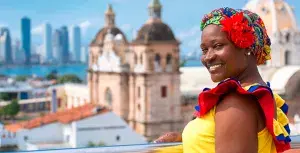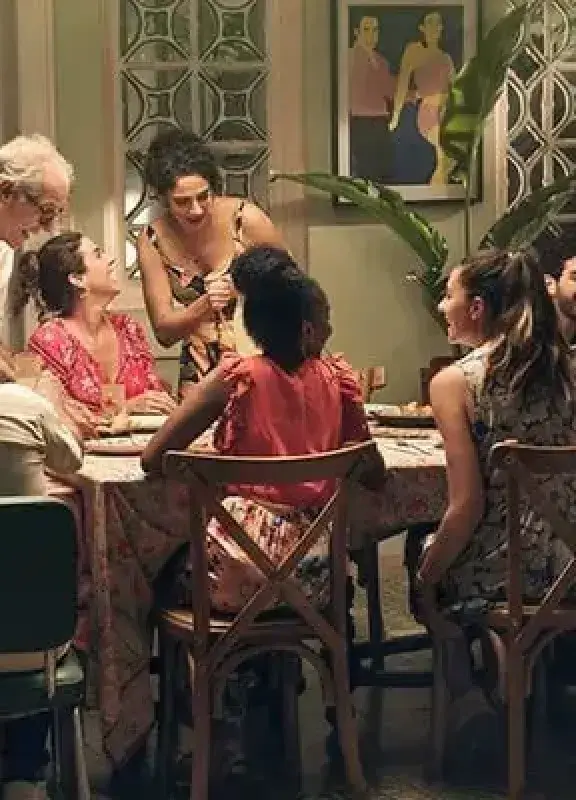Colombia, a multicultural and multiethnic country
The process of cultural fusion in Colombia is the result of a diverse culture rich in traditions and customs from different origins.
Mestizaje, marked since the time of the Conquest, demonstrates the ethnic multiplicity that makes Colombia a diverse country. That is what represents Colombians—the cultural variety that defines its people, regions, and even its gastronomy and traditional festivities. This is also established in the Political Constitution of 1991, which proclaimed the rights of a pluralistic nation and a free one.
The census published by DANE indicates that 10.6% of the population in Colombia is of African descent, 3.4% is Indigenous, and 0.01% is Roma. The remaining 85% is of mestizo origin.
The Process of Mestizaje in Colombia
In Colombia, the mixture of three cultures occurred after the Conquest: Indigenous Americans, Europeans—mostly Spaniards—and Africans. As a result, mestizos (descendants of Amerindians and whites), mulattos (descendants of Black and white people), and zambos (descendants of Amerindians and Black people) emerged. Arabs, Jews, and Roma also arrived in smaller numbers.

Due to this constant mixture, Colombia has developed a fascinating culture, recognized for the warmth of its people. From musical rhythms that make anyone want to dance to dishes prepared with local ingredients, every Colombian feels proud and eager to explore every corner of the country. This is perhaps one of the most outstanding traits of Colombians: a multicultural Colombia that has allowed the richness of social expressions that today define us before the world.
Here, no one is ashamed to laugh or dance at any moment; on the contrary, it is a natural expression of happiness that Colombians carry in their blood. That is why there are festivals and celebrations such as the Carnival of Blacks and Whites, held in San Juan de Pasto. This event celebrates and honors the cultural diversity and racial mixture that characterize Colombians.
Types of Mestizaje in Colombia
- Mestizos: The term mestizo referred to a person born to a father or mother of the “white race” and a mother or father of the “Amerindian race.”
- Mulattos: The term mulatto referred to people born from the union of a white person and a Black person.
- Zambos: The offspring of a Black person and an Indigenous American person.
- Cuarterones: The term Cuarterón referred to someone born in America from a mestizo and a Spanish person, or from a Spaniard and a mestiza.
The Origin of the Colombian Population
The Amerindians, especially the Chibcha family, were the great settlers of what is now known as Colombia, and in their roots lies the country’s pre-Columbian legacy. Today, of the Amerindian tribes that once inhabited our territory, about 87 Indigenous peoples remain across 27 regions. The descendants of these cultures carry in their being the traditions that have endured for generations.
The white ethnicity that arrived in Colombia was predominantly Spanish, bringing with it the cultural traditions of Hispanic heritage. This differs from other Hispanic countries such as Argentina, Uruguay, and Chile, where there was a large migration of people from other parts of the Old Continent, such as Germany, Italy, and England.
The African descent in Colombia has a great cultural tradition. Brought by Europeans from Africa for mining work during the colonial period, this population secured its freedom mainly through settlements known as palenques. Their intermixing with Indigenous people was uncommon due to the heavy subjugation experienced by both groups.

The result of the mixture of these ethnicities is a multicultural Colombia, or a variety of rich cultural traditions—music, gastronomy, art, and festivals—that combine an ancestral Indigenous and African past with Spanish customs. Colombia is a country of contrasts, reflected in a diverse cultural landscape that hides a millenary tradition of multiple peoples.
Each of these cultures preserves ancestral traditions that remain intact—its exotic dishes, its vibrant music that makes anyone dance, and its traditional clothing—but above all, the warmth of its people.
 Welcome, you are in
Welcome, you are in 




